I. Introduction
I. 1. The Carry of an Asset
I. 2. Carry Trade
II. Yen carry trade
II. 1. What is Yen carry trade?
II. 1. (1) Typical meaning
II. 1. (2) Broad meaning
II. 2. The progress of Yen carry trade
II. 3. The scale of Yen carry trade
II. 4. The risk of Yen-carry trade
II. 4. (1) The asymmetry between build-up and unwinding
II. 4. (2) The worsening economy in invested country
II. 4. (3) Asymmetry & bubble bring economy crisis
III. Dollar carry trade
III. 1. The definition of dollar carry trade
III. 2. Emerge of dollar carry trade
III. 3. The Effect of Expansion of the Dollar Carry Trade
III. 3. (1) Dollar Carry Trade and the Dollar
III. 3. (2) Real Value of the U.S Dollar
III. 3. (3) Dollar Carry Trade and Asset Bubbles
III. 4. The Future of the Dollar Carry Trade
IV. Conclusion
II. Yen carry trade
II. 1. What is Yen carry trade?
II. 1. (1) Typical meaning
The typical meaning is “borrowing at low interest rates in yen and using the loan to buy higher yielding assets elsewhere.” During the past decade, the trade has become a “staple” for many investors. One of the most popular forms of the strategy exploits the gap between US and Japanese yields. Anyone borrowing for next to nothing in yen and putting the money into US Treasuries (US government bonds) has received a double pay-off: from an interest rate difference of more than three percentage points and from the dollar’s rise against the yen. Investors make their profit when they reverse the trade and pay back the yen loan.
II. 1. (2) Broad meaning
Not only foreign investors and Hedge fund, Japanese people and institutional investors (including banks) tend to sell Yen, which has lower profit rate. By using invest experts, they buy foreign bonds. It also contains FX margin trading.
The broadest meaning of Yen carry trade is that central banks of each country are reducing the deal of weight on Japanese Yen. Central banks consider the low interest rate of Japanese Yen and expect the continuing weakness of it. Then, they lower the portion of Yen in the foreign exchange reserves by selling bonds of Yen and buying bonds of other currencies. For example, in 2007 the interest rate of Yen remained 0.5%~1.0%, while expected rate of return of Korean bonds was relatively high, around 5%. In addition, the exchange rate of Korean won seemed to be stronger against Japanese Yen. Therefore, Yen currencies were coming into Korean financial market as more than 5% of arbitrage were expected to happen by borrowing Yen and investing bonds of Won. Yen carry trade can happen in any countries where arbitrages from interest rate and exchange rate exist, such as Australia, New Zealand.
The bank of Japan defines the broad meaning of Yen carry trade as below. The interoffice account gives an insight into how much of the Yen liabilities are used to fund activities “outside” Japan. The tell-tale signs of the “broad yen carry trade” would be the conjunction of Large yen liabilities in the JPY interbank market and Large net assets on the interoffice account. This is because when yen funds are channeled for use outside Japan, there is the conjunction of large yen borrowing and then the on-lending of these yen funds to entities outside Japan.
II. 2. The progress of Yen carry trade
Since 1990s, Japanese government and central bank started lowering interest rate policies so that Yen carry trade has begun.
1) After Kobe Earthquake in 1995, the Bank of Japan lowers the interest rate at 1%. In 1997, as financial crisis in East-Asia was broadening, Yen carry assets were paid off. In addition, The sharp increase in foreign bank assets in 1997 and 1998 is accounted for by the increase in “bills bought.” The Japan premium ruling at the time meant that non-Japanese banks had a considerable pricing advantage over local Japanese rivals, and managed to exploit this advantage.



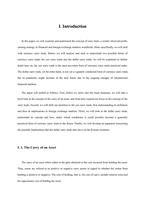
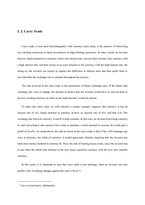
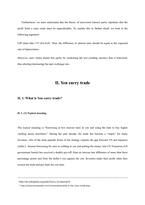
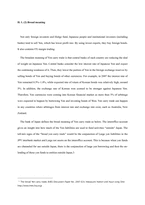
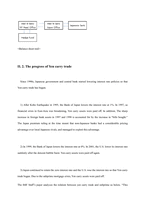

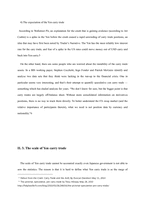
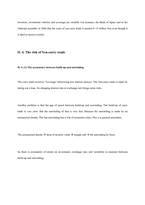
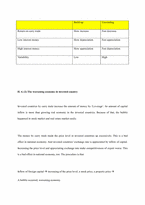
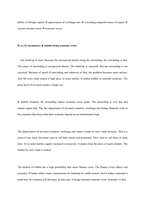
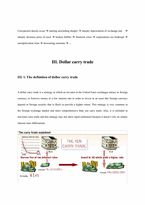
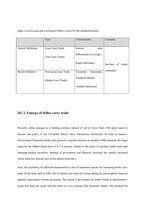
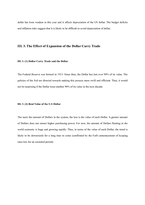
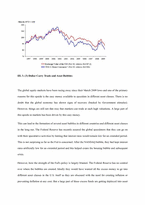
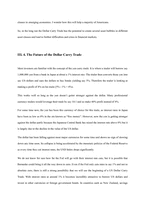
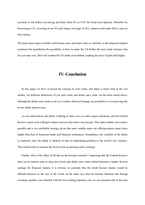
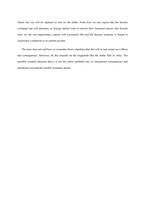
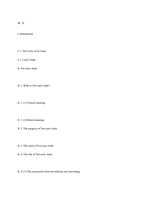
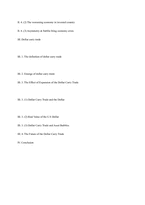
 분야
분야


